More Plant-parasitic Nematode Management Slides
advertisement
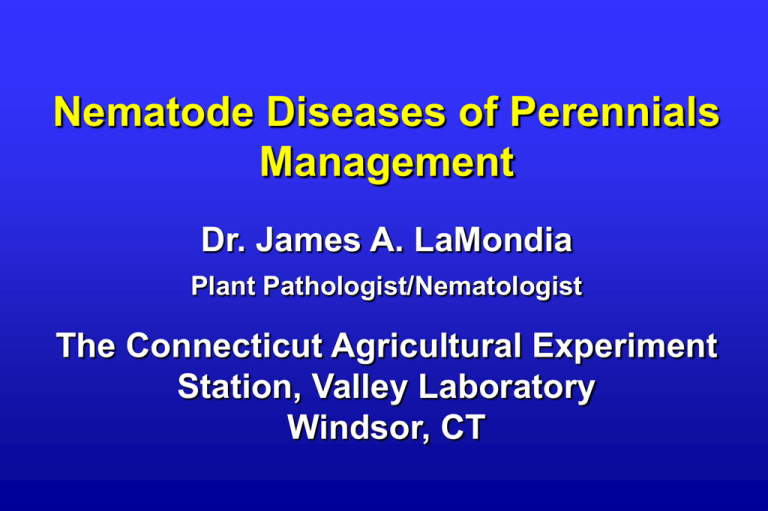
Nematode Diseases of Perennials Management Dr. James A. LaMondia Plant Pathologist/Nematologist The Connecticut Agricultural Experiment Station, Valley Laboratory Windsor, CT Perennials: Nematode Management • Thresholds lower than annuals • Fewer chances for control • Host differences – perennial roots Nematode Disease Management • Preventative approach best • • • • Sanitation and inspection Rotation with resistance Root pruning Heat treatment Nematode Disease Management Sanitation and inspection Host status evaluation : Labor-intensive inspection can focus on common susceptible species M. hapla – highly susceptible Acanthus Astilbe Clematis Iris Salvia Aconitum Cimicifuga Geranium Ligularia Stachys Ajuga Coreopsis Heliopsis Lobelia Veronica M. hapla – resistant Achillea Digitalis Iris Monarda Phlox Asclepias Echinacea Liatris Papaver Primula Aster Gaillardia Liriope Penstemon Rudbeckia Nematode Disease Management Rotation with resistance Can non-host plants reduce root-knot populations in soil ? Greenhouse resistance screen Rate for galls after two months 98 spp in 85 genera 29 resistant (no galls); 46 susceptible (> 11 galls) remainder intermediate Effect of Resistance on Meloidogyne hapla • Inoculate with 10,000 eggs/pot • 2 -6 months growth, bioassay • Evaluate root galling and egg production. Effect of Resistance on M. hapla Genus Galls/plant Galls/g root Aster 0 0 Coreopsis 321 18 Lobelia 2576 87 Rudbeckia 0 0 Nematode Disease Management Root pruning M. hapla J2 typically infects at or near root tips. Can pruning reduce infection? Effect of Root Pruning on Meloidogyne hapla • Inoculate with 10,000 eggs/pot • Three months growth, root prune, two months growth • Evaluate root galling and egg production. Effect of Root Pruning on M. hapla Geranium % Fine roots pruned #Galls 0 40.3 50 18.7 75 21.4 100 2.9 #Eggs 10,411 2,228 4,460 43 Effect of Root Pruning on M. hapla #Galls/g root#Eggs/g root Genus Pruned Not Pruned Not Aconitum 0.0 8.5 0.0 404 Ajuga 0.0 15.9 0.0 361 Anemone 0.0 71.7 0.0 13,902 Trollius 0.2 1.8 0.0 790 Hot Water treatment: M. hapla • Large tank submersion • Temp variation +/- 0.5 C • Cool in 15-17 C after treatment • Astilbe and Hosta: 45 C 60 min; and 47 C for 30 min effective • 49 C for 30 min - plant death Root-Knot Management • Preventative approach best • • • • Sanitation and inspection Rotation with resistance Root pruning/Heat treatment Plant Breeding/Selection Nematodes Infecting Perennials Meloidogyne hapla - root-knot Aphelenchoides - foliar nematodes Ditylenchus - stem/bulb nematodes Pratylenchus - lesion nematodes Foliar Nematode Management with Insecticides • Avid 0.15 EC (abamectin) spider mites: 4 fl oz/100 gal leafminer rate: 8 fl oz/100 gal • Diazinon AG500 1.5 oz/3 gal • Spray to complete coverage Treatment ppm ai sprays A. fragariae Control Avid Avid Avid 0.0 5.6 5.6 11.2 1 2 1 35.7 6.7 1.9 19.5 Avid 11.2 2 0.0 • P = 0.04 Ditylenchus per g leaf tissue Treatment ppm ai 1-4 sprays 5-6 Control Avid Avid Diazinon 0.0 5.6 11.2 5.6 482 257 485 187 215 693 164 2 Diazinon 11.2 226 5 Foliar Nematode Management with Peroxides ZeroTol or Oxidate 27% hydrogen peroxide Evaluate toxicity in vitro Evaluate efficacy in vivo ZeroTol: Efficacy vs Aphelenchoides in vitro evaluation Dilution control 1:200 1:100 1:50 Viable (24 hr) 94 % 1 0 0 (48 hr) 76 % 0 0 0 ZeroTol: Efficacy vs Aphelenchoides A. fragariae per g Anemone leaf Dilution 1 control 113 1:100 639 1:50 1657 2 113 1208 3988 3 150 872 780 Foliar Nematode Management with Insecticides/miticides Pylon: new miticide for ornamentals 21.4% chlorfenapyr Label for foliar Aphelenchoides Efficacy similar to Avid Foliar Nematode Management • Preventative approach best • Sanitation and inspection • Reduce overhead watering • Insecticide treatments •Suppression of nematodes Nematodes Infecting Perennials Meloidogyne hapla - root-knot Aphelenchoides - foliar nematodes Ditylenchus - stem/bulb nematodes Pratylenchus - lesion nematodes Lesion Nematode Management • Primarily field-grown problem • Pre-plant sampling • Rotation - suppressive plants Lesion Nematode Management • Preventative approach best • Sanitation and inspection • Rotation with suppressive plants Rudbeckia hirta; Polynema marigold • Fumigation
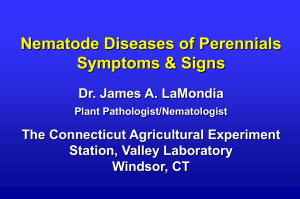
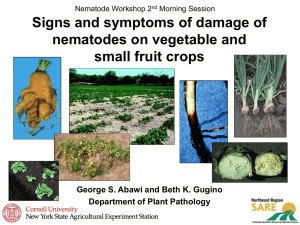

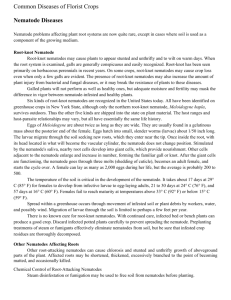
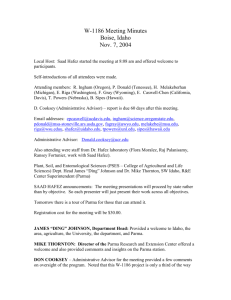
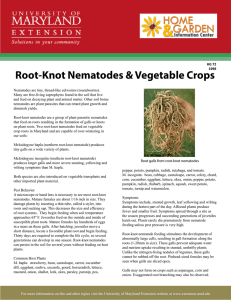
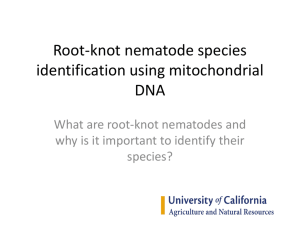
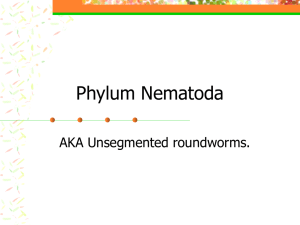
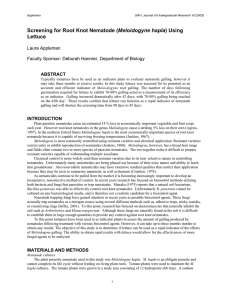
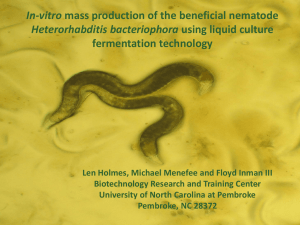
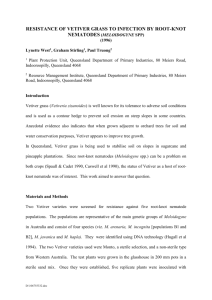
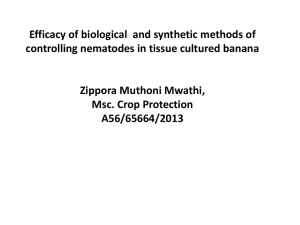


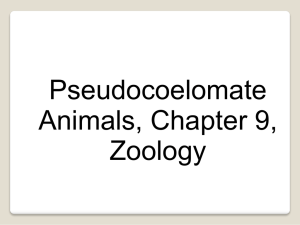
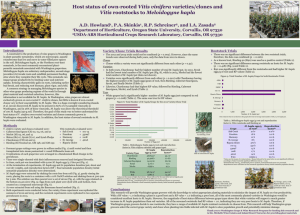
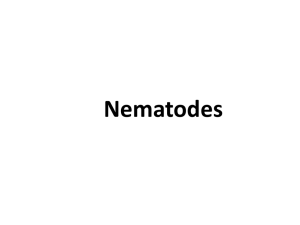
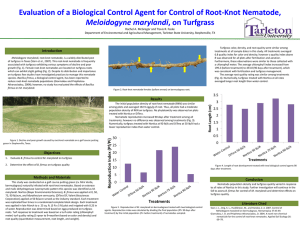
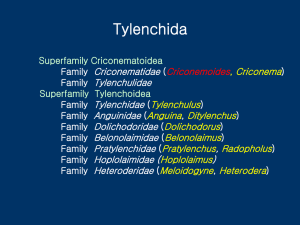

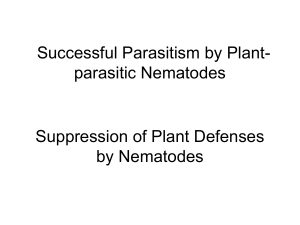
![avid parent night 1[1].](http://s2.studylib.net/store/data/005364026_1-3545164f7508a237d75956b3943e7277-300x300.png)